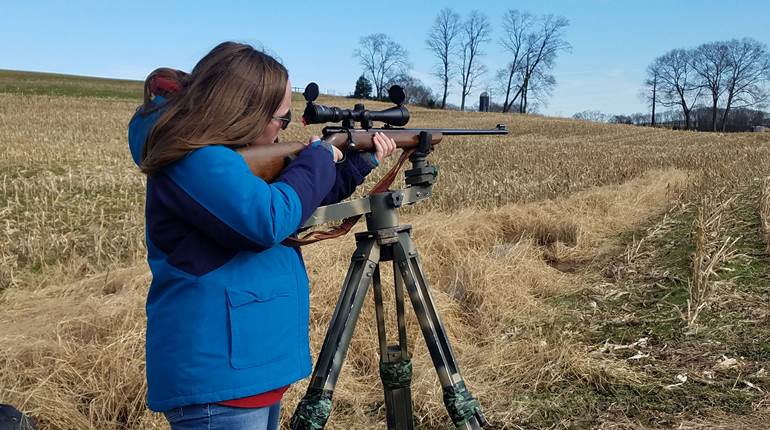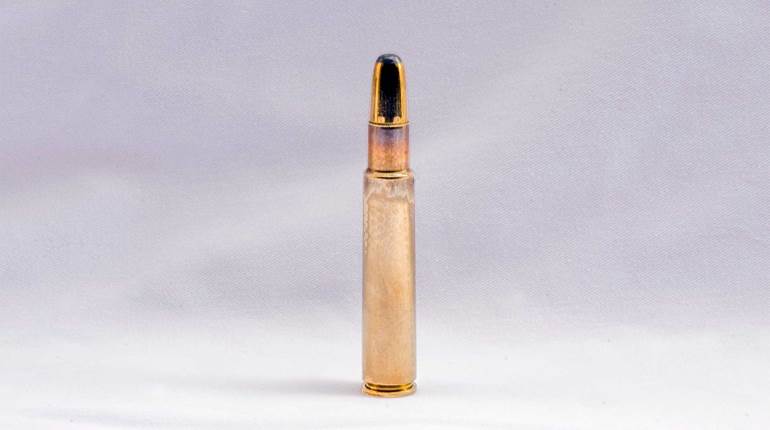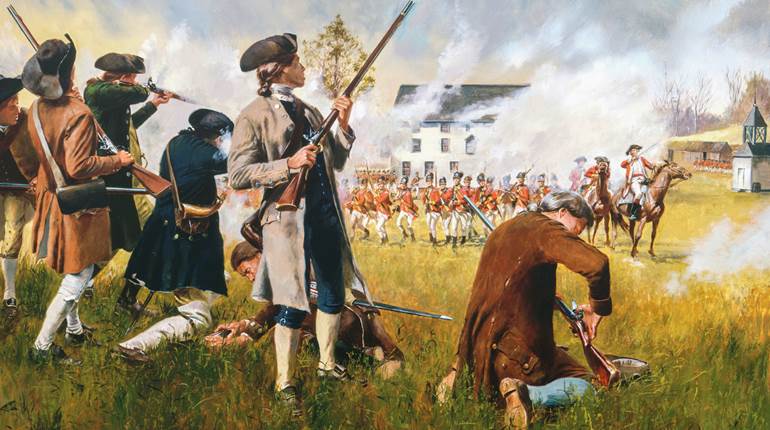
The first time almost anyone—who hasn’t been previously schooled—picks up a rifle to shoot it, they shoulder the stock, make some effort to sight down the barrel and pull the trigger. And unless they are very lucky, the shot lands somewhere other than they planned. It is the buttstock that chiefly differentiates the rifle from other arms. It is the primary point of contact between the shooter and the rifle. Since people vary a great deal in size, width, neck length and strength, it would seem obvious that in order to accurately deliver a shot from a rifle that the buttstock fit the shooter and make the delivery of that shot as effortless as possible.
If we examine the parts of the buttstock, it should make it more clear why the dimensions of these components are critical to getting a better fit; hence making it easier to hit the target. The buttstock has six primary parts: pistol grip, comb, buttplate, toe and heel. Each has a dimension in relation to a different part of the rifle or stock. These dimensions include: length of pull, circumference of the pistol grip, radius of the pistol grip, comb height, toe height, heel height and cast-off or cast-on.
The most basic and critical measurement is length of pull. Length of pull is the distance from the center of the trigger to the center of the buttplate. It should be obvious that a lanky, 6’4”, stringbean of a fellow needs a longer length of pull than his 5’6” buddy. If our lanky friend tries to shoot a rifle set up for his sawed-off buddy, he might well bang the end of his nose with his thumb every time he fires the rifle. In fact, the reason soldiers were taught to shoot the 1903 Springfield rifle with their thumbs paralleling the stock was to help prevent long, lanky soldiers from banging their noses from a stock made for shorter soldiers. The needs of wartime production prevented individual fitting of rifle stocks at that time. Today, the modern soldier carries a rifle with an adjustable length-of-pull buttstock, allowing one buttstock to fit everyone from a 5’2” female to a 6’6” male.
Another reason length of pull is so important—at least on conventional rifle stocks—is that it effects the placement of the shooter’s eye in relation to the rifle’s sights. What is known as a “classic” rifle stock—the type of stock used on the vast majority of bolt-action rifles for the last century or so—is actually a compilation of tradeoffs and compromises that allow it to be used effectively in the widest variety of situations, body styles and shooting positions.
Conventional or European rifle stocks had a comb much lower than the centerline of the bore than what is found today on a classic rifle stock. The heel was even lower. We call these measurements “drop at comb” and “drop at heel” as a matter of convention, the centerline of the bore being zero. The reason for this was a holdover from black powder rifles that were generally shot from the offhand position with the shooter and his neck standing erect. Since the eye needed to be a bit above the line of bore to see the iron sights and the shoulder is even lower, rifle stocks of the era had lower drops at the comb and heel than those seen today.
As telescopic sights became more popular, the need for a higher comb and heel drop came along with it. Most telescopic sights were centered 1 1/4" to 1 1/2" above the centerline of the bore. A temporary solution—and one still used today—was the lace-on comb. One reason for this idea was that early telescopic sights and their attachment methods lacked a bit of reliability. There even were some scope rings made with an opening beneath the rings to allow the shooter the choice of using iron or glass sights. Still others provided a method of swinging the scope out of the way to allow access to the iron sights. And another—still readily available today—is the QD or “quick disconnect scope mount that allows the shooter to flip a pair of extensions on the ring-attachment nut and quickly remove the scope completely from the rifle. This arrangement remains popular with many dangerous game rifles in Africa.
Another solution to the need for a higher comb was stolen from late 18th and early 19th century live pigeon shooters. Shotgunners competing in that high-stakes game found that a comb raised slightly higher and remaining parallel to the bore allowed for minor adjustments in mounting the gun while still maintaining the same sight picture and shot placement relative to the rear eye—which on a shotgun serves as the rear sight. Since most of the elite pigeon-shooting contests were conducted in Monte Carlo, this stock feature was given the same name. Later, some stock makers started sloping the Monte Carlo comb forward thus negating the versatility of cheek placement along the stock. It didn’t seem to matter; the Monte Carlo comb developed into something of a style characteristic that gained favor with those who elevated style above practicality. Roy Weatherby was arguably the best at this, more than likely because of his superior marketing skills.
Other, more conservative rifle stock makers developed the classic stock profile whereby the comb was set higher, and there was little, if any, more drop at the heel. Riflemen developed a form of shooting where the head was lowered by bending the neck forward. It is thought that this straighter profile—raising the shoulder in relation to the bore—lessens the recoil impulse imparted to the shooter, thereby making follow-up shots easier to deploy.
Nowadays, we have scopes with 30 mm and even larger tubes. The once-standard 1" scope tube is virtually relegated to the antique bin. Objective lens diameters have swelled from about an inch to 50, 60 or even 70 mm today, the idea being that larger objective lenses gather more light, thus making it easier to place a shot in low-light conditions. The larger objective lenses require that the scope be mounted even higher than the once-standard 1 1/2" above the line of bore. This, however, creates another problem.
For bolt-action rifles you can only raise the comb so far until it prevents the bolt from being withdrawn from the rifle. In the same vein, if the comb is too high it becomes impossible to clean the rifle from the breech unless it is removed from the stock. The best answer we have so far is the adjustable comb.
If you saw the top off the stock at the comb, insert a pair of threaded steel rods and a pair of adjusting nuts, you can raise or lower the comb to just about any useful height. Today’s modular stocks whereby virtually every component is adjustable utilize some version of this adjustable comb. In at least one case the female thread component is mounted in such a way so that it can swivel, thus allowing the shooter to slope the comb as he or she sees fit.
The buttstock has two more points of contact: the rear grip and the buttplate. The rear grip is the one grasped by the strong-side hand and is where the rifle is primarily controlled. During the black-powder era this was often referred to as the wrist because it was usually straight. Somewhere during the latter part of the 19th century the better rifle and stock makers started curving the wrist of their buttstocks on their premium rifles. Often given the moniker “sporting rifle” these stocks were found to add some control of the rifle, an especially welcome addition when the cartridge was powerful. This feature became something of a style statement as well and was adopted into lever-action rifles, including the pistol-caliber Winchester Models 1873 and 1892. As with their predecessors, this was a feature of the premium “Sporting Rifle” upgrade, often accompanied by well-figured walnut and engraving.
During the process of bolt-action rifles becoming the norm this “pistol grip,” as it became known, developed into standard feature of rifle stocks. Classic rifle stockmakers like Griffin & Howe, Bob Owen, Al Biesen and August Pachmayr often made the pistol grips on their rifles as a segment of a circle in profile. Some stole an idea from British shotgun stockmakers by making what was called a quarter or Prince of Wales pistol grip that was more open than a pure classic design, allowing the shooter a bit more room to shift his hand fore and aft if the rifle had double-set triggers while still having more control than a straight grip.
Last, but certainly not the least, is the buttplate. The buttplate is the point where recoil is primarily transferred to the shooter. A well-designed buttplate transfers the recoil to a wider area, thus minimizing the discomfort to the shooter. It also serves as a primary anchor point; every other point of contact measures from the buttplate.
At first muskets and rifles had no separate plate at the butt. The wood terminated and the butt was given a profile thought to be the best by the shooter or stockmaker. When the German gunmakers started building the Pennsylvania flintlock rifles, the butt often terminated in a brass or iron curve, carefully inleted into the wood. Metal buttplates protected the wood from splintering as the rifle was propped to the ready, and it was thought that the curved portion would fit the shooter better, allowing for a more repeatable indexing of the primary anchor point. Too, a curved buttplate is considered quite stylish by many to this day. However, while a curved buttplate may be a wickedly beautiful part of the rifle, it can be equally wicked on the shooter’s shoulder when the gun is made to shoot powerful loads.
In the east during the early days of America, rifles were generally .32 to .36 caliber, with an occasional .50 caliber thrown in for the pre-Elmer Keith types. During the westward expansion though, mountain men and pioneers often ran into larger and more dangerous animals. A bison can easily weigh a ton, and even a 400 lb. grizzly can be a real handful if all you have in your hands is a squirrel rifle. So .45-caliber and .50-caliber guns made famous by Samuel Hawken and others became in demand. The curved buttplates dug into shooter’s shoulders, and with all that power in front of them, many an otherwise stout and taciturn fellow might well cringe or cry.
As an example, I have a replica of a Sharps Model 1874 rifle chambered in .45-90-2 1/4 and an original 1886 Winchester chambered in .45-90 Winchester. Each uses the same case, but the Winchester is limited to 350-grain bullets because of the overall cartridge length that can be handled by this receiver. The Winchester has a curved steel buttplate; the Sharps has a shotgun-style steel buttplate. Either one is a handful when shooting full-power loads, but I start flinching with the Winchester after maybe 10 rounds in a half hour. With the Sharps, I can go another five rounds in a half hour, even though it recoils more with the heavier 530-grain bullet I normally shoot because the buttplate is wider and the toe and heel cannot dig into my shoulder.
The answer to hard-kicking rifles—and even those that recoil less but the shooter is sensitive—is a soft padded buttplate, now normally called a recoil pad. My research shows the first of these rubber pads showing up around the 1870s. S.W. Silvers, of London, offered the Anti-Recoil Heel Plate-The Silver’s Safety Pad. Other makers soon followed suit including Funkes, Grieb and the Jostam Hy-Gun. All of these were initially made for shotgunners. Because the high volume of shots a shooter makes with a shotgun, he or she usually appreciates something to take some of the sting out of their gun’s recoil. A rifleman usually doesn’t fire a lot of rounds from a powerful rifle at one sitting, and for years it was considered unmanly to have a “sissy pad” on your big rifle.
Eventually we got past that nonsense, and today some form of rubber pad is nearly standard on all rifles. Recoil pads are less expensive to buy and fit to a rifle than a steel buttplate, and the shooting public seems to expect some form of butt terminus that doesn’t leave a contusion on their shoulder. Quite a few recoil pad makers have come and gone over the years, but the one with the most longevity seems to be Pachmayr. Recoil pads may be solid or ventilated, the idea behind a ventilated pad is that it compresses easier that a solid pad, although some makers enclose the “vents” to make the pad look better and not gather dirt.
Image courtesy Sisk Rifles
The most modern stock seen today is one that fully adjusts. Typically, it is made from metal or composite and is constructed in a more-or-less modular fashion whereby each point of contact can be adjusted to the individual shooter. They look rather space age, and I would think they are a bear to pack with all the angular supports many of the have, but for the long-range precision shooter some form of an adjustable stock rules the roost.
As with all things, you pay your money and you make your choice. For the modern rifleman who feels that function is his sole criteria, a modern adjustable stock is the way to go. Others like the feel of a traditional rifle stock but cringe at taking a pretty piece of walnut into the field where it most assuredly will pick up dings and scratches. For them, a composite rifle stock that will take a beating and can easily be refurbished with a spray can of paint will get the nod. Then there are traditionalists—like yours truly—who gush over finely figured walnut, hand fitting and hand-cut checkering and are worth the hassle to maintain. Any of these styles of buttstocks will work. But most importantly, it should fit.






































